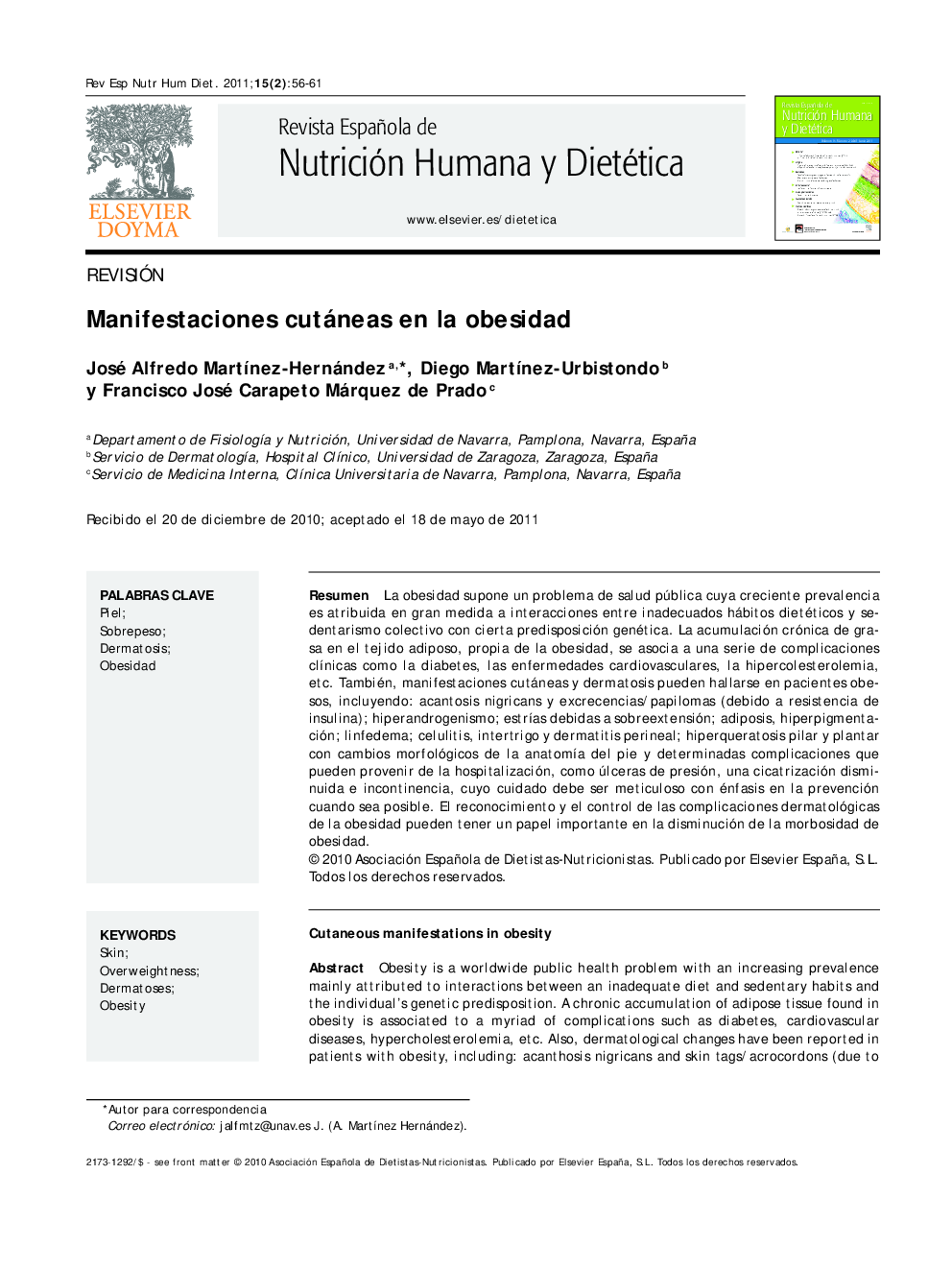| Article ID | Journal | Published Year | Pages | File Type |
|---|---|---|---|---|
| 2689711 | Revista Española de Nutrición Humana y Dietética | 2011 | 6 Pages |
Abstract
Obesity is a worldwide public health problem with an increasing prevalence mainly attributed to interactions between an inadequate diet and sedentary habits and the individual's genetic predisposition. A chronic accumulation of adipose tissue found in obesity is associated to a myriad of complications such as diabetes, cardiovascular diseases, hypercholesterolemia, etc. Also, dermatological changes have been reported in patients with obesity, including: acanthosis nigricans and skin tags/acrocordons (due to insulin resistance); hyperandrogenism; striae; adiposis dolorosa, hyperpigmentation; lymphedema; cellulitis, intertrigo and perineal dermatitis; hyperkeratosis pilaris and plantaris with morphological changes. Complications that may arise from hospitalisation such as pressure ulcers, diminished wound healing and incontinence, must all be carefully managed with an emphasis on prevention where possible. Recognition and control of the dermatological complications of obesity play an important role in decreasing the morbidity of obesity.
Related Topics
Health Sciences
Nursing and Health Professions
Nutrition
Authors
José Alfredo MartÃnez-Hernández, Diego MartÃnez-Urbistondo, Francisco José Carapeto Márquez de Prado,
